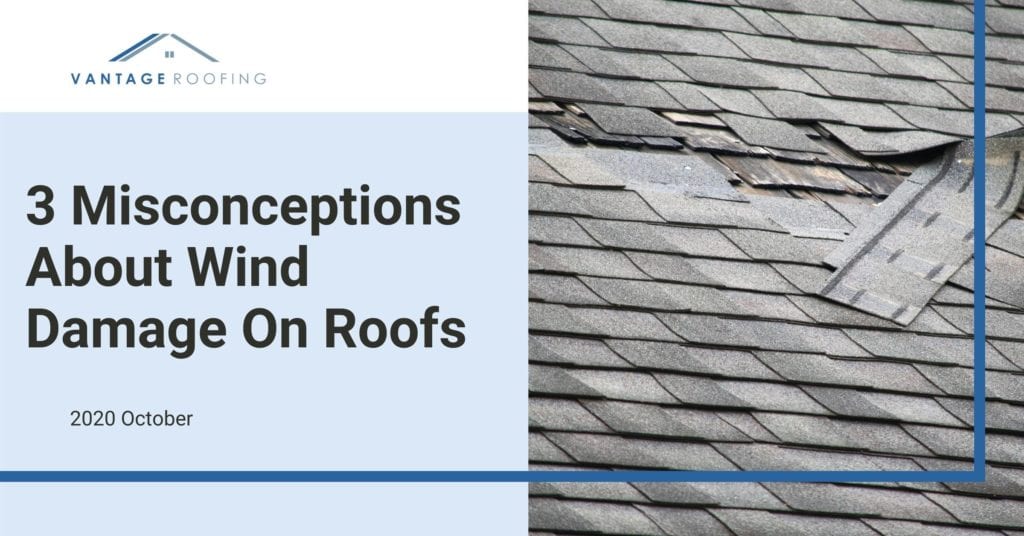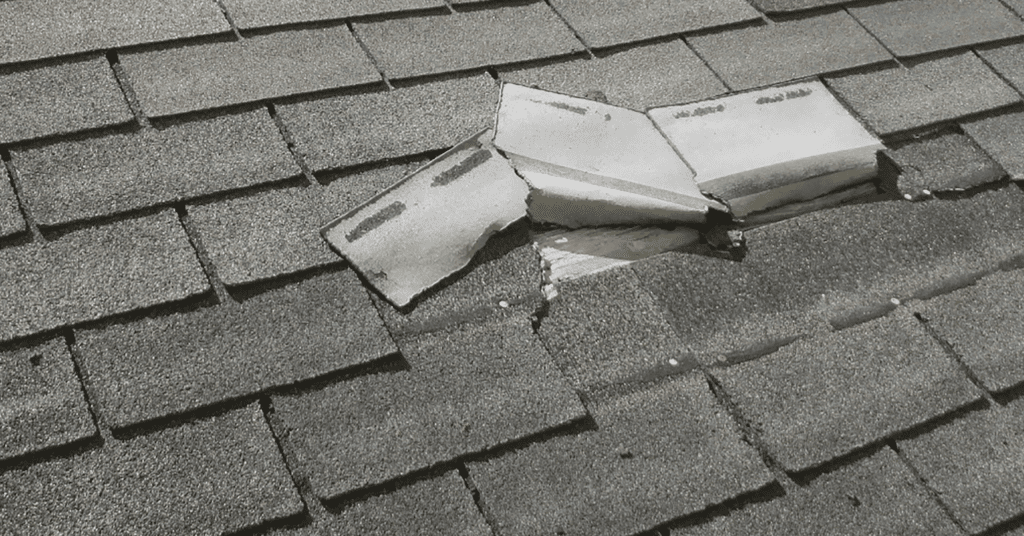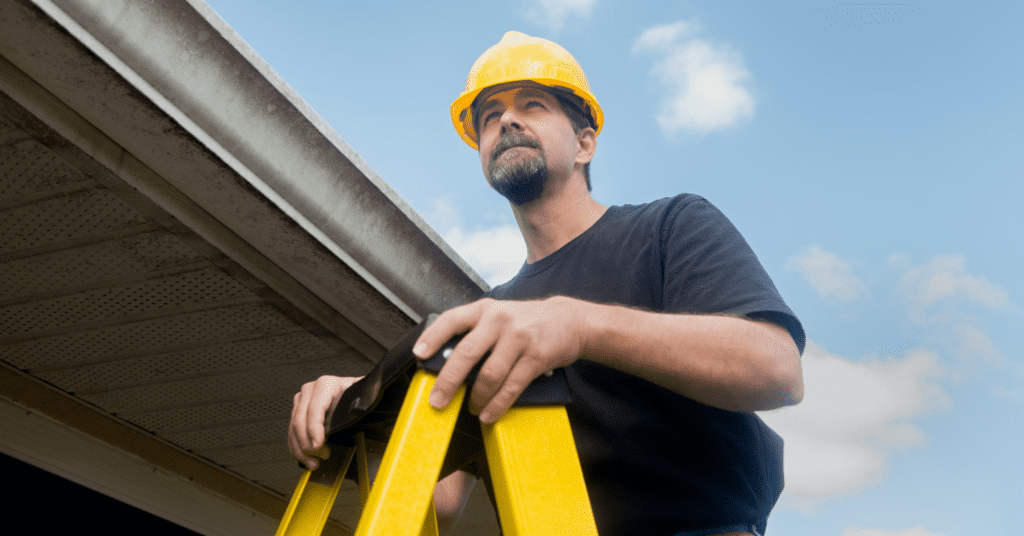3 Common Misconceptions About Wind Damage on Roofs


High winds can significantly cause some damage to the asphalt shingles.
However, not all damages are directly attributed to the wind effects. They can also be the result of a hidden defect that a roofing company fails to address. Yet many misconceptions surround the wind damage on roofs, which are not correct.
Any particular damage after strong winds can also be a factor of a manufacturing defect, poor installation, or poor grade shingles. Keep reading to find out about the three common misconceptions surrounding wind-damaged asphalt shingle roofing.
Misconception 1: Shingles With Poor Adhesion Are lifted by the wind.
The first and most common misconception is any shingles with insufficient adhesion are wind-lifted or wind-damaged. This idea completely excludes the fact that shingle adhesives can also fail or become weak over time. Strong winds can effortlessly lift and tear off shingles with insufficient adhesion.
While it’s important to understand the misconceptions around wind damage, it’s equally crucial to know what constitutes good asphalt shingle roofing to ensure longevity and resistance to external factors.
But shingles with poor adhesion should not be associated with wind damage as the wind only makes it easier to lift or cause further damage to them. So to understand it better, you should know the reasons behind poor adhesion. Below are a few reasons why shingle adhesives fail:
- Manufacturing defect
- Improper installation
- Aging
- Installations during cold weather
- Cyclic thermal expansion and contraction
- Poor grade or contaminated adhesives.


As a result, unsealed and unbonded shingles are not necessarily due to winds. Besides, several studies confirm the fact that after some years, the sealing naturally starts deteriorating. In addition, there is a pattern of installation errors: under-driven nails or debris in the sealant strip and release tape accidentally sticking to the sealant strip due to packaging errors.
Misconception 2 – Wind Lifted Shingles Are Not Always Visible
The second misconception is shingles damaged by wind are not always clearly visible. But the damages caused by heavy winds are visible. Although wind damage on shingles can sometimes be clearly visible, homeowners should be vigilant for early signs of roof damage to catch issues before they escalate.
So to understand this, you must know how wind affects or damages the shingles in the highly exposed areas of the roof, such as the ridges, eaves, and hips.
Firstly, due to the wind pressure, there occurs an uplift force, causing the shingles to rise. As the shingles start to arise, eventually, a greater uplift force takes place. As a result, the shingles begin to flip, causing creases or tears, and more creases and tears may develop if the wind forces the shingles to flutter and bend.
Finally, if the wind is too strong, the tabs or shingles begin to break off and vanish in the direction of the wind. So clearly, shingles damaged by wind show signs. Hence, shingles without any signs of crease, fold, missing tabs, and poor adhesion are no wind damage.
Misconception 3 – Empirical Tests Showing the Reduced Shingle Strength After a Storm Is Accurate
The third misconception is trusting that the empirical test results of a shingle after a storm are accurate. Just as misconceptions exist around wind damage, there can be misconceptions about hail damage. Learn how to inspect your roof for hail damage to ensure your home remains protected.
How to test the reduced strength? The proper method to evaluate the strength of a shingle after a storm is by using ASTM D7158, the Standard Test Method for Wind Resistance of Asphalt Shingles.
This test compares the field-measured strength of the shingle with the original rating given by the manufacturer. It may sound easy, but the problem arises while calculating uplift forces as the manufacturers do not provide such information readily. Hence, people calculate uplift forces using test results from other independent laboratories.
Besides, the laboratories that are capable of performing the ASTM D7158 testing are rare and expensive. So this forces people to use testing tools that vary significantly from ASTM D7158.
Conclusion


The best thing that you can do is hire an expert roofing company for a proper wind damage assessment and repair. Vantage Roofing Ltd. is a premier source of top-quality roofing solutions.
After understanding the misconceptions around wind damage, it’s imperative to act promptly if you suspect any issues. Discover the 7 steps to take when roof damage is detected to safeguard your property.
While addressing wind damage is crucial, it’s also important to be aware that your roof causes energy inefficiencies. Read about the top signs your roof may be causing energy loss to ensure you’re not spending extra on your energy bills
We provide roof installation, roof maintenance, and storm-damaged roofing repair services to residential clients in and around Burnaby, BC. Call us today at (604) 332-1253, or fill out our contact form to set up an appointment. We look forward to working with you and transforming your dream home into a reality!
- Burnaby Roofers
- New Westminster Roofers
- Coquitlam Roofers
- Port Coquitlam Roofers
- Port Moody Roofers
- Delta Roofers
- Ladner Roofers
- Vancouver Roofers
- North Vancouver Roofers
- West Vancouver Roofers
- Richmond Roofers
- Surrey Roofers
- White Rock Roofers
- Maple Ridge Roofers
- Pitt Meadows Roofers
- Langley Roofers
- Powell River Roofers
